

Posted by Wayne Parham [ 64.216.178.63 ] on August 04, 2005 at 01:19:30:
With the help of Bill Wassilak, the first 12 π basshorn is about halfway done. I took a few photos to document the process, which will help make building them easier in the future.
First things first, I printed plans both at 1/6th scale (8.5x11 A4 paper) and 1/2 scale (A1 paper, 23x33). We then laid out the profile on a side panel by drawing it in pencil. This helps to maintain perspective and to keep track of where things go.
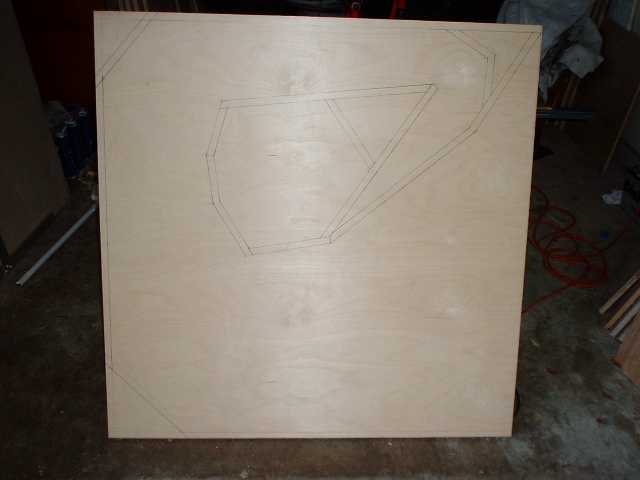
After cutting the side panels and drawing a profile on them, we proceeded to cut the rest of the panels. You can see the cut angles used above. It's more complicated to cut than a bass-reflex box or a π cornerhorn, but it's pretty straightforward with a table saw.
After cutting out all the sections that make up the flare, the next thing we did ws to cut the baffles for the motor chamber. Two need holes for the woofers, one does not.
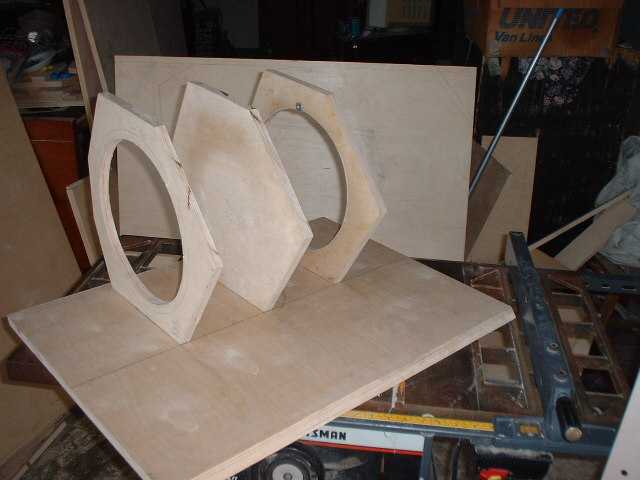
Next we cut the throat piece and began to assemble the motor chamber.
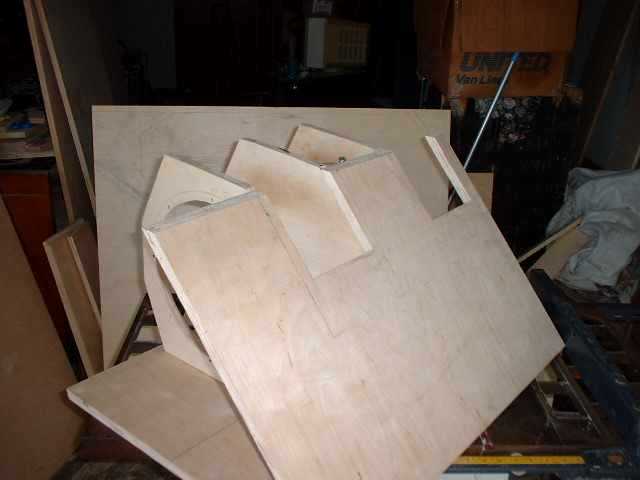
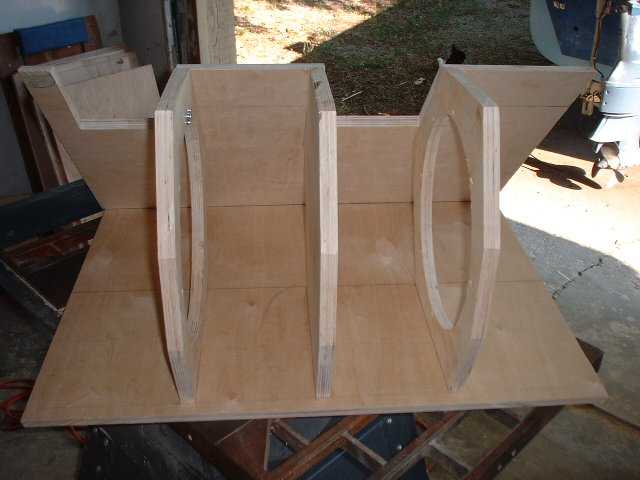
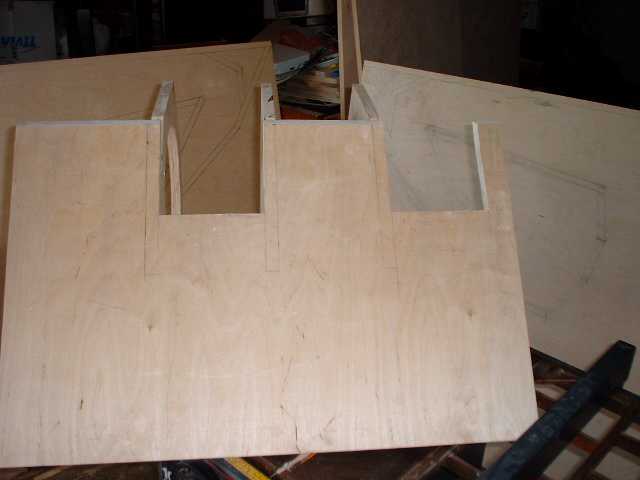
Seven panels surround the motor chamber, so now we trim and fit each one. We started with the the front piece and worked our way around the the back pieces.
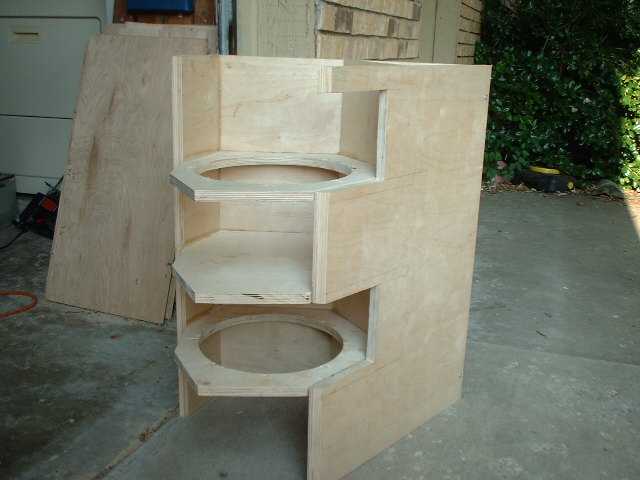
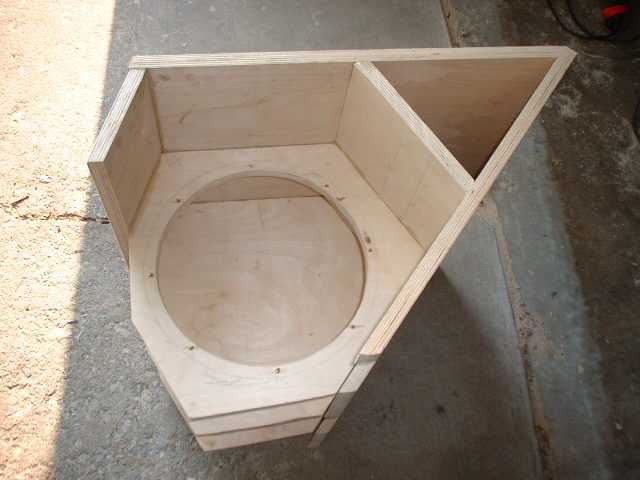
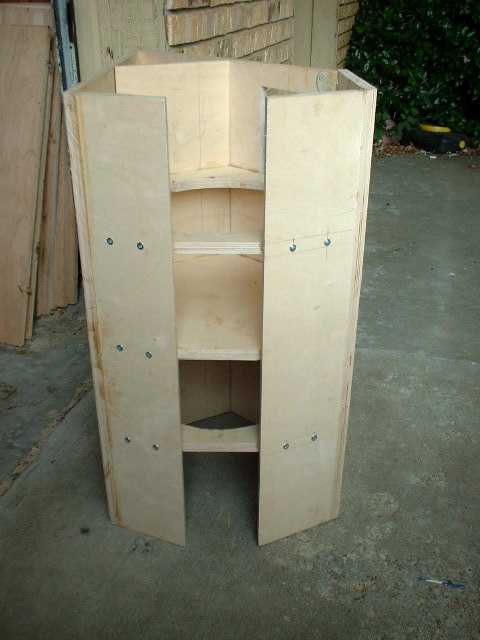
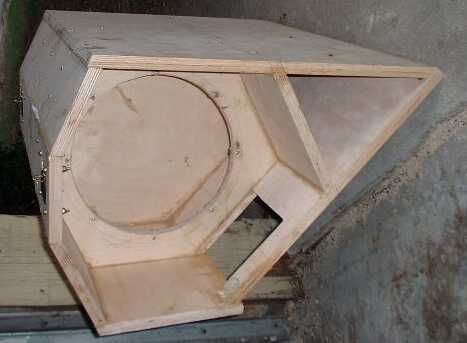
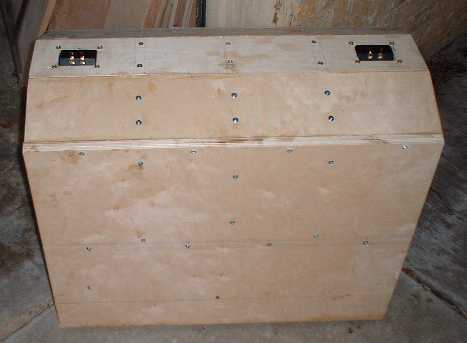
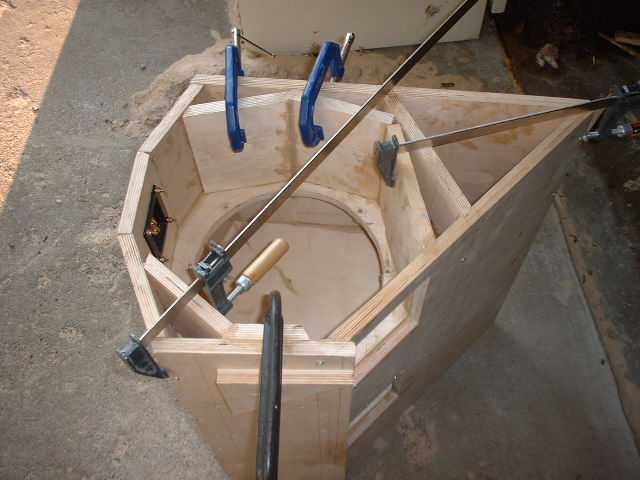
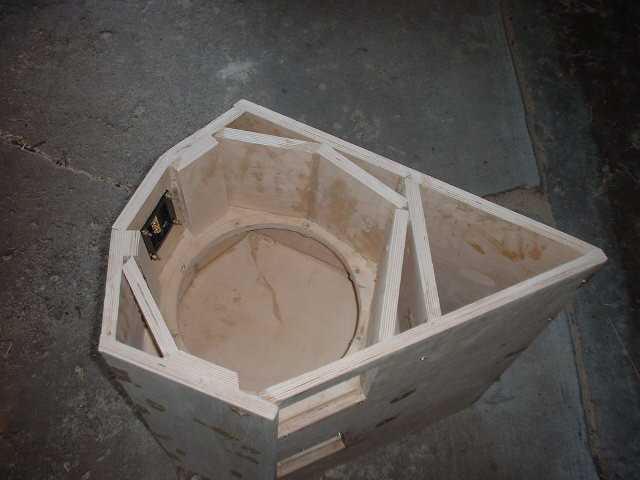
Two pieces are installed on the outer front chamber that are not installed on the inner front chamber. This is due to the difference in widths of the front chambers, and it keeps the volume of each exactly the same. Notice the two pieces near the speaker connector terminal on the outer chamber are not present on the inner chamber.
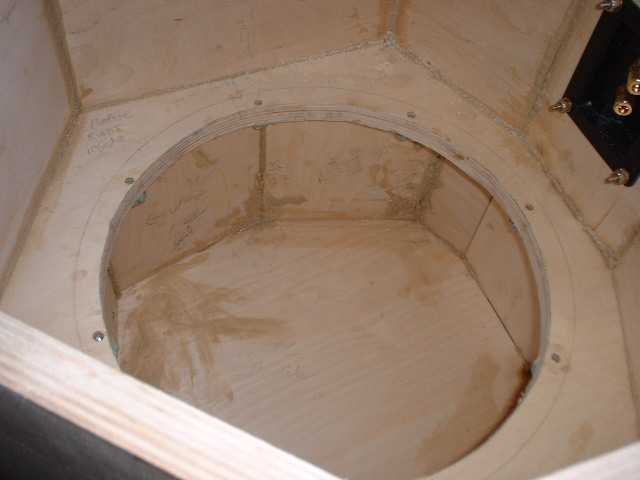
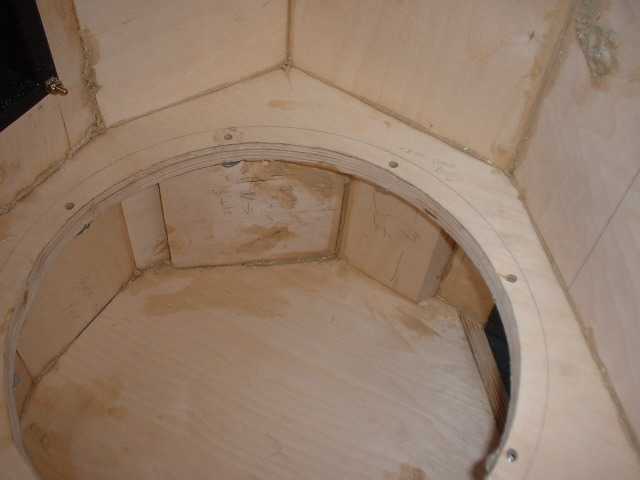
Now route the side panels so the access panel / heat exchanger can be installed flush. The panel is 1/4" thick, and a gasket is installed so route the edge 9/16" deep for a flush fit.
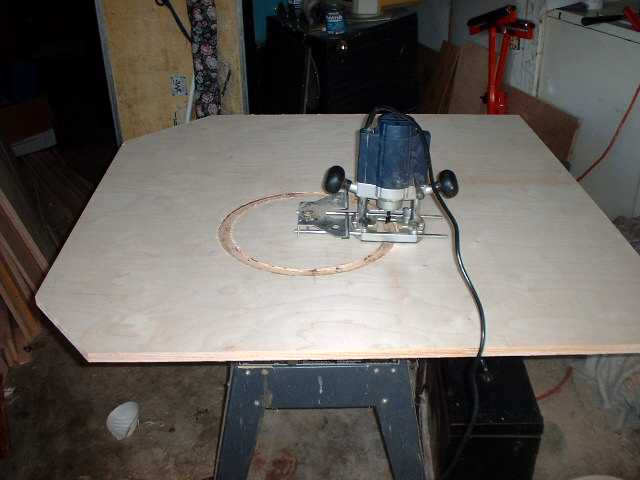
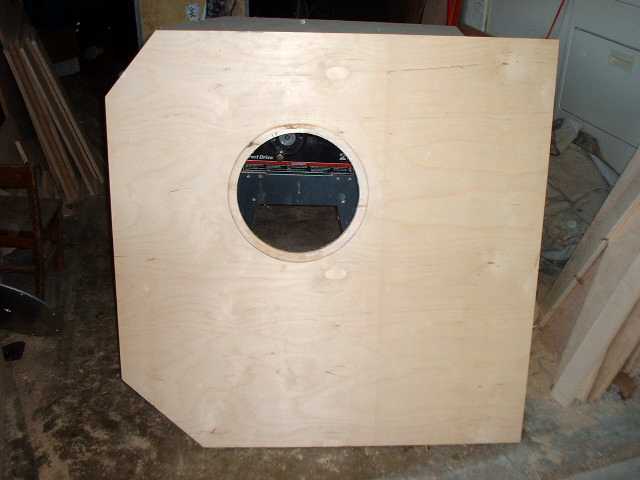
After the side panels have access holes, install T-Nuts in each side. Apply a dab of epoxy on each and tighten them in place.
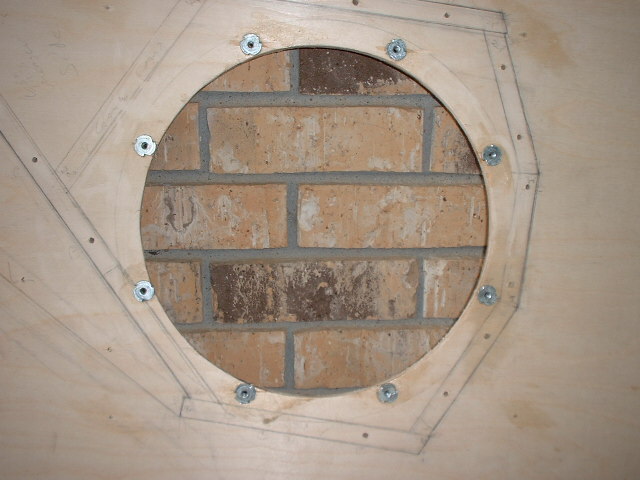
Notice that some of the T-Nuts interfere with the motor chamber or fill. Remove just enough material on the edge of the motor chamber that the T-Nuts do not standoff the sides from the motor chamber. They're about 1/16" thick when fully inserted, so you don't need to take off much. Also, drill holes in the motor chamber and fill so that screws used to attach the access panel / heat exchanger will not stop into the wood. After you have thoroughly checked that the side panel will fit flush and access panel screws can be inserted later, apply glue to the side panel and attach the motor chamber. Be sure to test fit the woofer, cooling plug and access plate and ensure proper alignment.
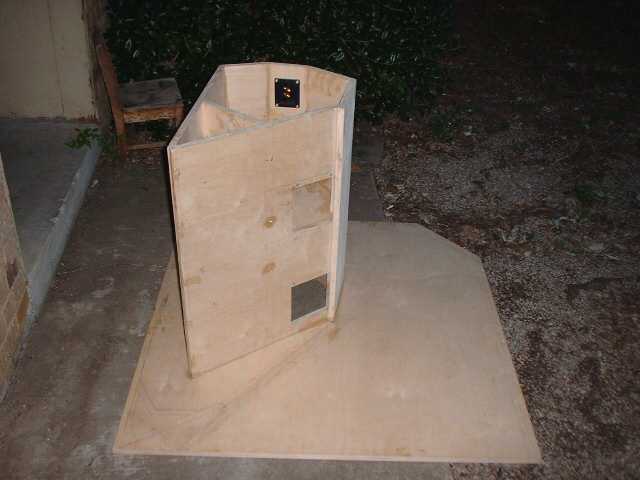
If you use screws to pull the motor chamber to the side panel, be sure to drill starter holes in both the side panel and motor chamber. The screws should pass through the side panels, and the holes in the motor chambert should be just large enough that the wood screws bite. The concern here is that you definitely do not want the screws to split the wood, so starter holes are important. When used right, screws won't split the wood but will act as permanent clamps that pull the pieces together tightly while the glue sets.
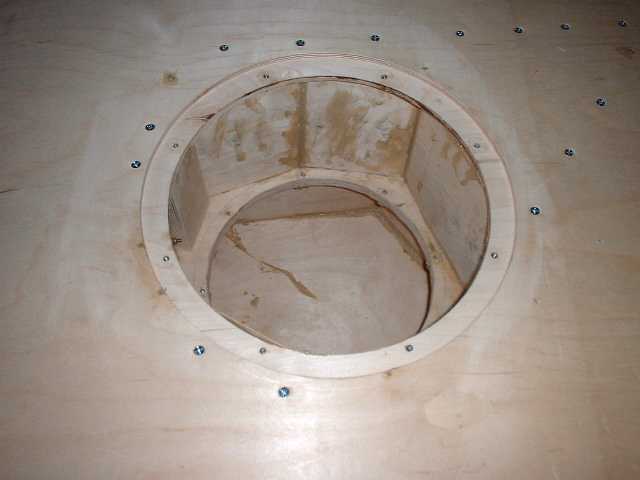
[ PiSpeakers Forum ] [ Help ]